Abstract
In two villages in southern Tunisia where trachoma was endemic 7 per cent and 14 per cent of adults respectively had visual acuity of 20/400 or less. In both villages active trachoma affected most children under the age of two, reached a peak in two- to five-year-olds, then declined to age 15. The chronic inflammatory disease in childhood appeared to produce irreversible scarring of the eyelids, and loss of vision occurred in adult life due to corneal scarring caused by inturned eye lashes and loss of tears (dry-eyed syndrome). Economic development in one village was associated with a decline in active, infectious disease. In the second village, whose traditional economy was unchanged, there was the same prevalence of active disease over a three-year period. Unless economic development or public health control programmes reduce the prevalence of severe and moderate trachoma children now affected will develop the same blinding lesions as their parents. With the increasing numbers of children who survive there will probably be a dramatic increase in the numbers of the blind from trachoma in 10 to 20 years. Since active inflammatory trachoma in childhood responds to tetracyclines, erythromycin, and sulphonamides the disease should be attacked in those undeveloped rural areas where it continues to lead to blindness.
Full text
PDF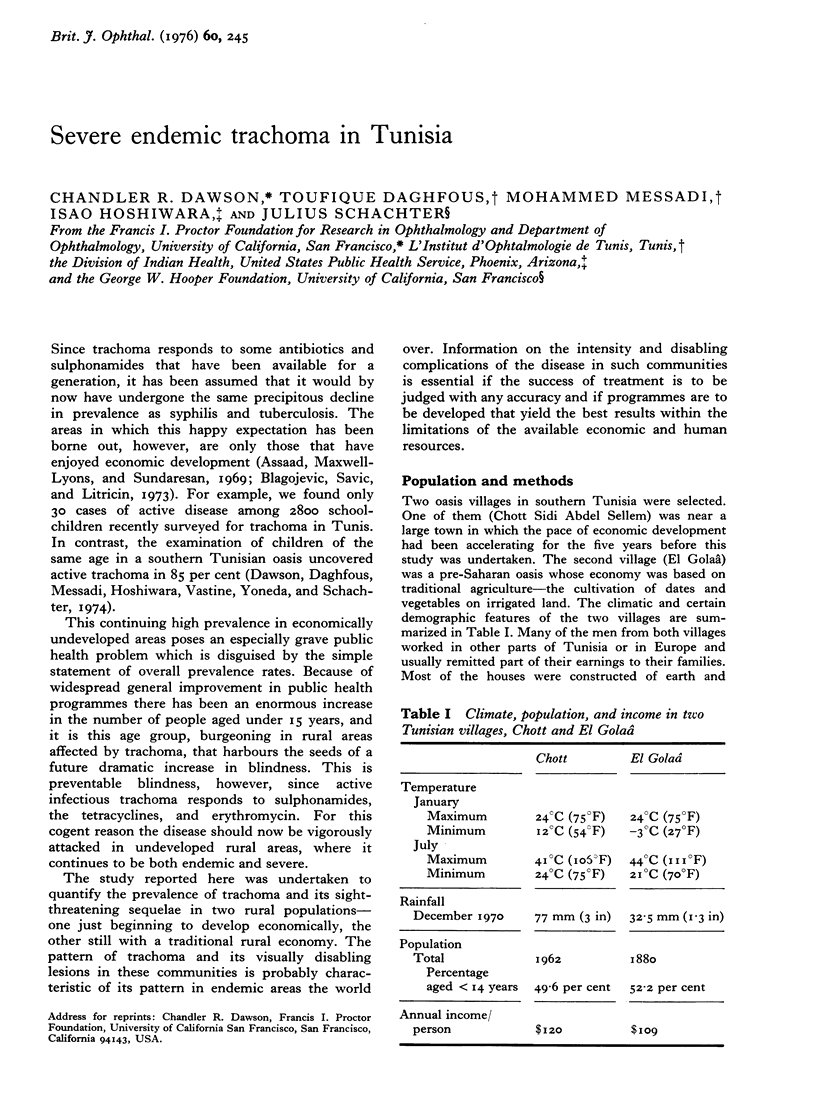
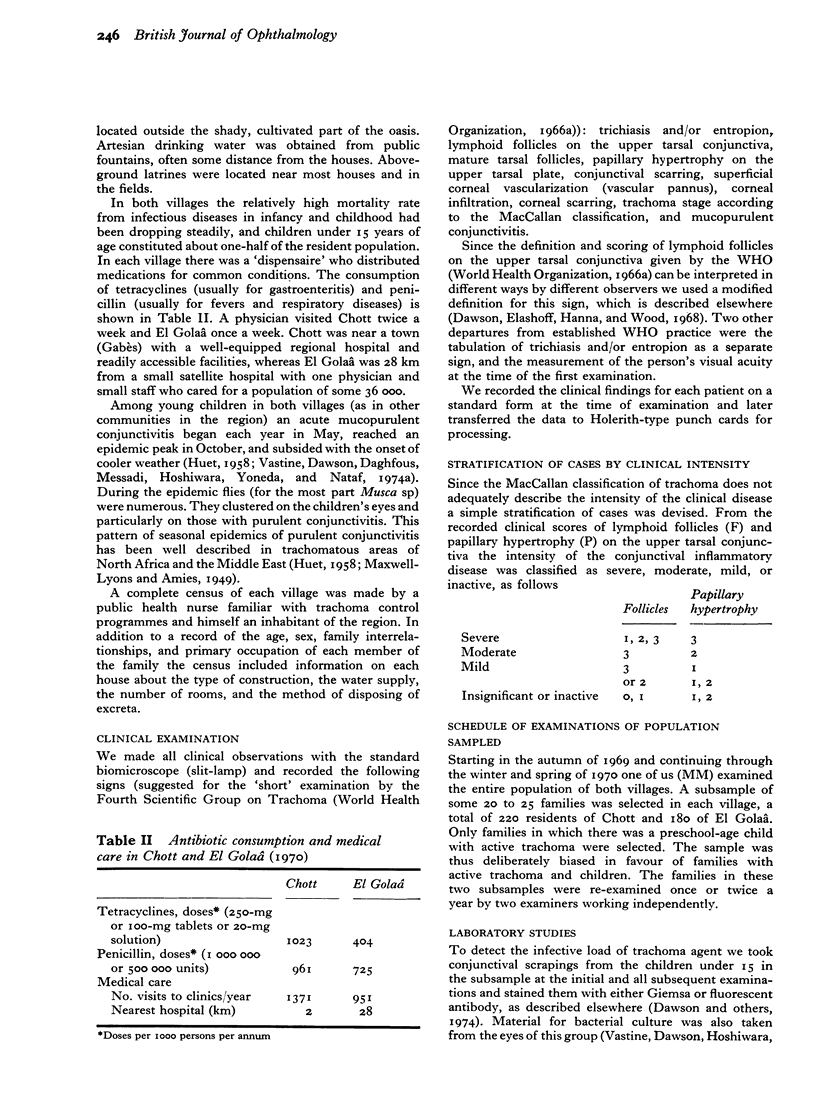
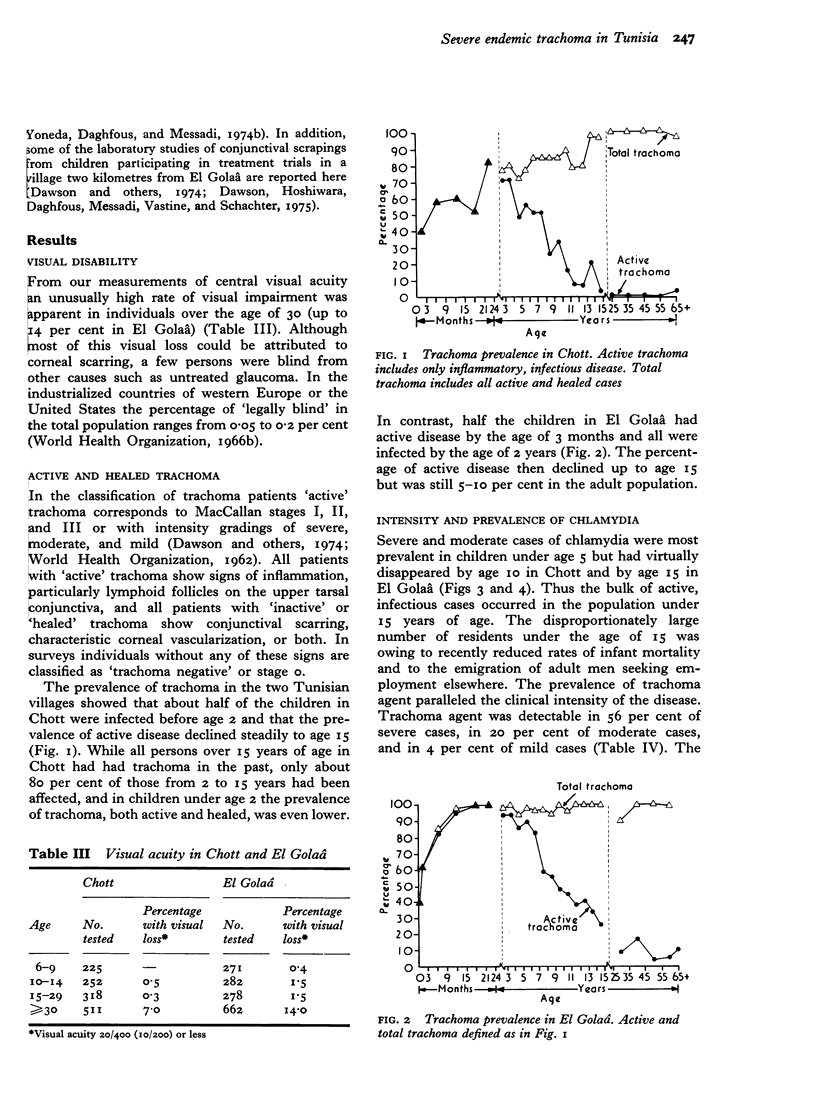
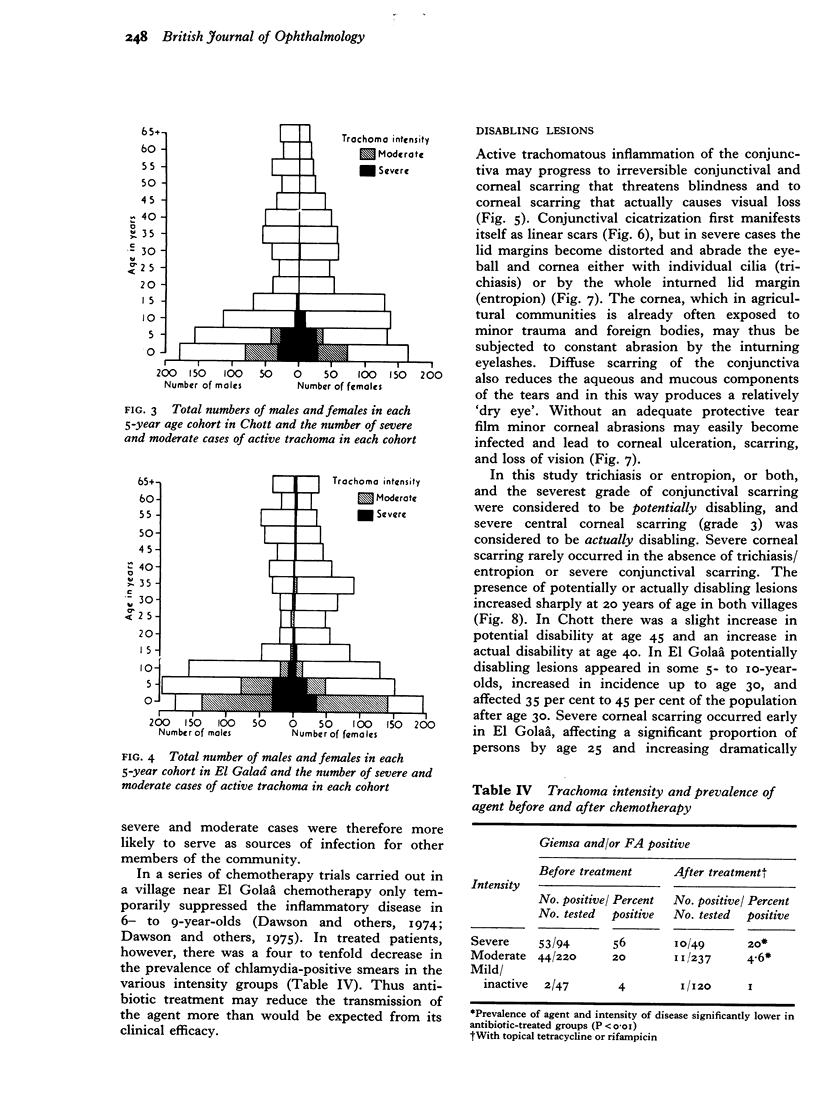

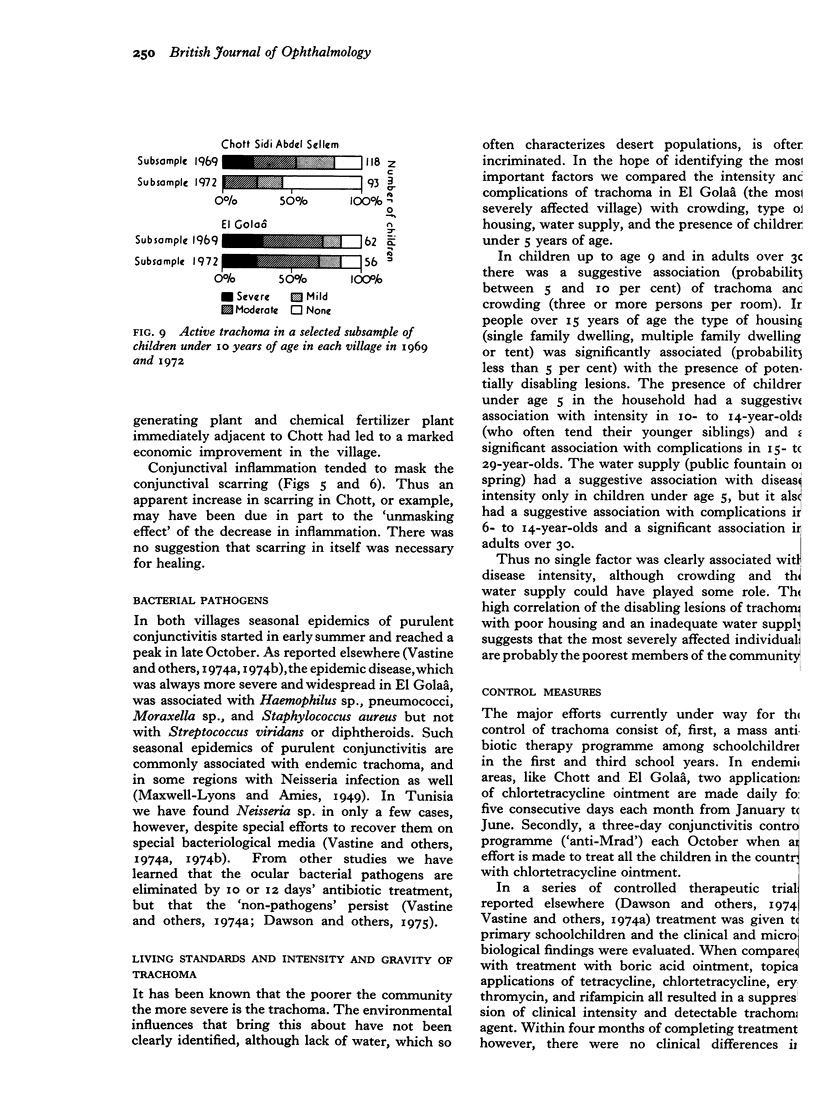
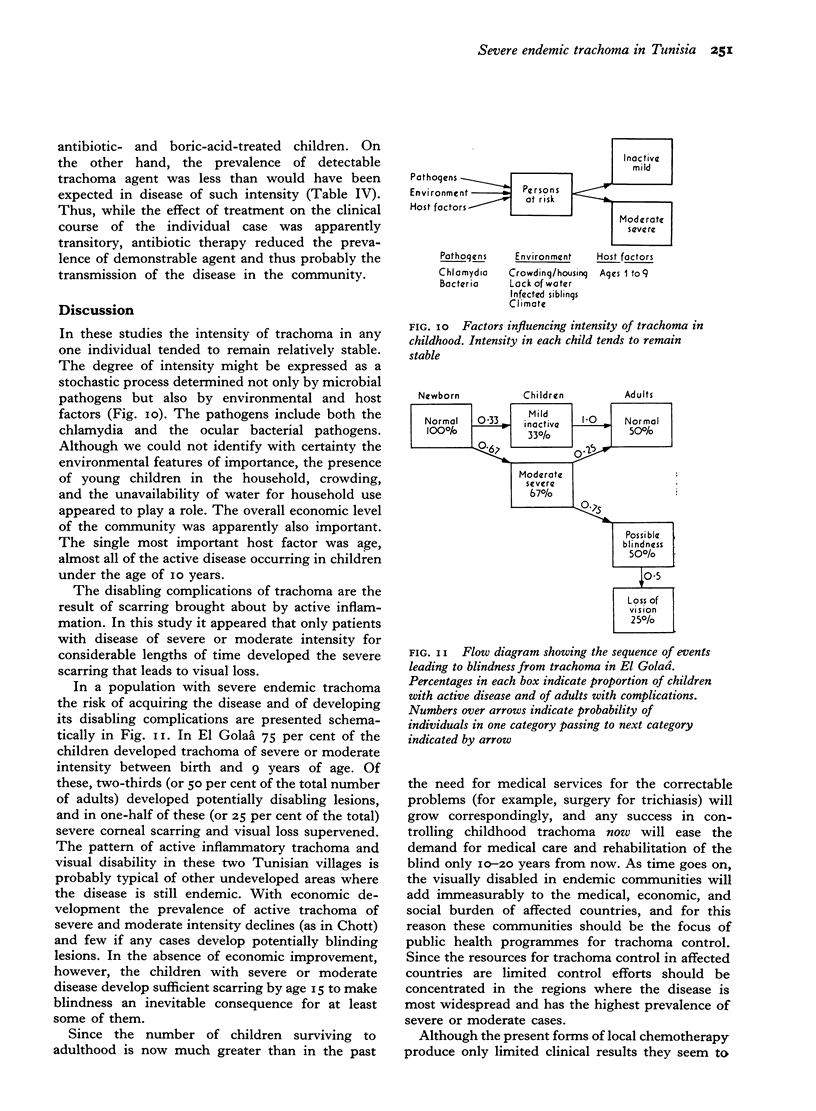
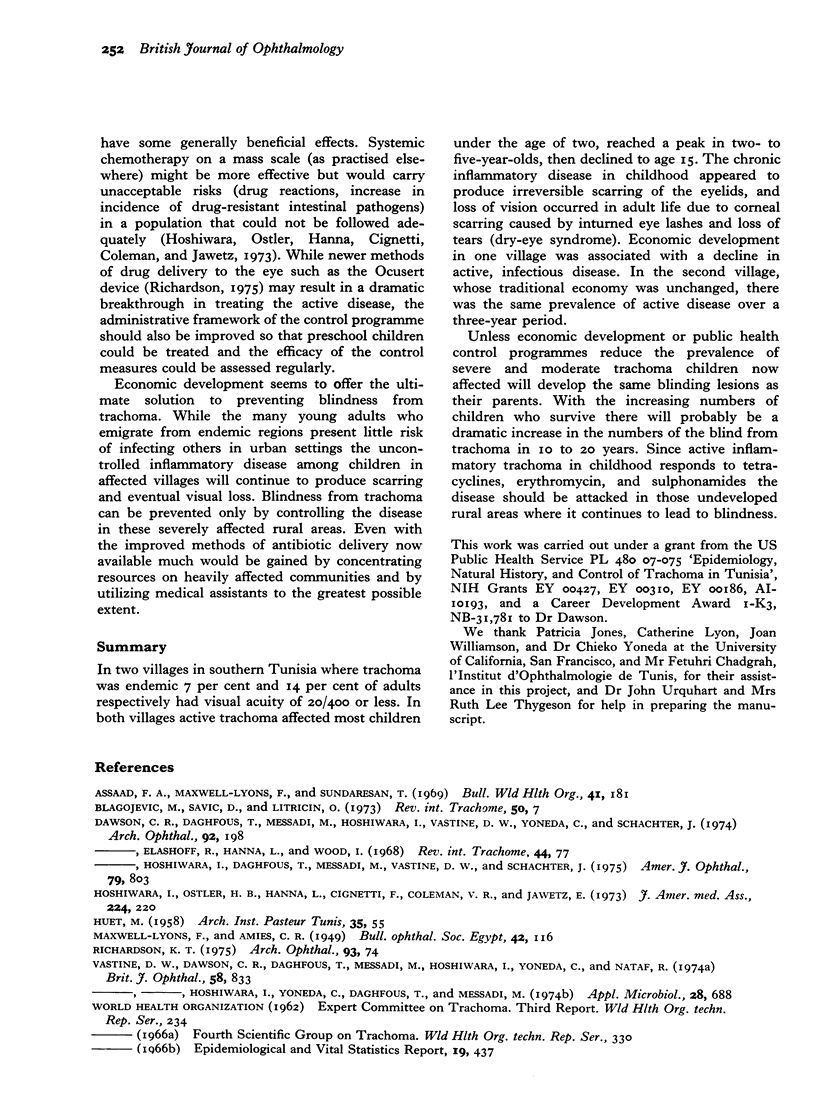
Images in this article
Selected References
These references are in PubMed. This may not be the complete list of references from this article.
- Dawson C. R., Daghfous T., Messadi M., Hoshiwara I., Vastine D. W., Yoneda C., Schacter J. Severe endemic trachoma in tunisia. II. A controlled therapy trial of topically applied chlortetracycline and erythromycin. Arch Ophthalmol. 1974 Sep;92(3):198–203. doi: 10.1001/archopht.1974.01010010206003. [DOI] [PubMed] [Google Scholar]
- Dawson C. R., Hoshiwara I., Daghfous T., Messadi M., Vastine D. W., Schachter J. Topical tetracycline and rifampicin therapy of endemic trachoma in Tunisia. Am J Ophthalmol. 1975 May;79(5):803–811. doi: 10.1016/0002-9394(75)90740-0. [DOI] [PubMed] [Google Scholar]
- Hoshiwara I., Ostler H. B., Hanna L., Cignetti F., Coleman V. R., Jawetz E. Doxycycline treatment of chronic trachoma. JAMA. 1973 Apr 9;224(2):220–223. [PubMed] [Google Scholar]
- Richardson K. T. Ocular microtherapy. Membrane-controlled drug therapy. Arch Ophthalmol. 1975 Jan;93(1):74–86. doi: 10.1001/archopht.1975.01010020078014. [DOI] [PubMed] [Google Scholar]
- Vastine D. W., Dawson C. R., Daghfous T., Messadi M., Hoshiwara I., Yoneda C., Nataf R. Severe endemic trachoma in Tunisia. I. Effect of topical chemotherapy on conjunctivitis and ocular bacteria. Br J Ophthalmol. 1974 Oct;58(10):833–842. doi: 10.1136/bjo.58.10.833. [DOI] [PMC free article] [PubMed] [Google Scholar]
- Vastine D. W., Dawson C. R., Hoshiwara I., Yoneda C., Daghfous T., Messadi M. Comparison of media for the isolation of haemophilus species from cases of seasonal conjunctivitis associated with severe endemic trachoma. Appl Microbiol. 1974 Oct;28(4):688–690. doi: 10.1128/am.28.4.688-690.1974. [DOI] [PMC free article] [PubMed] [Google Scholar]





